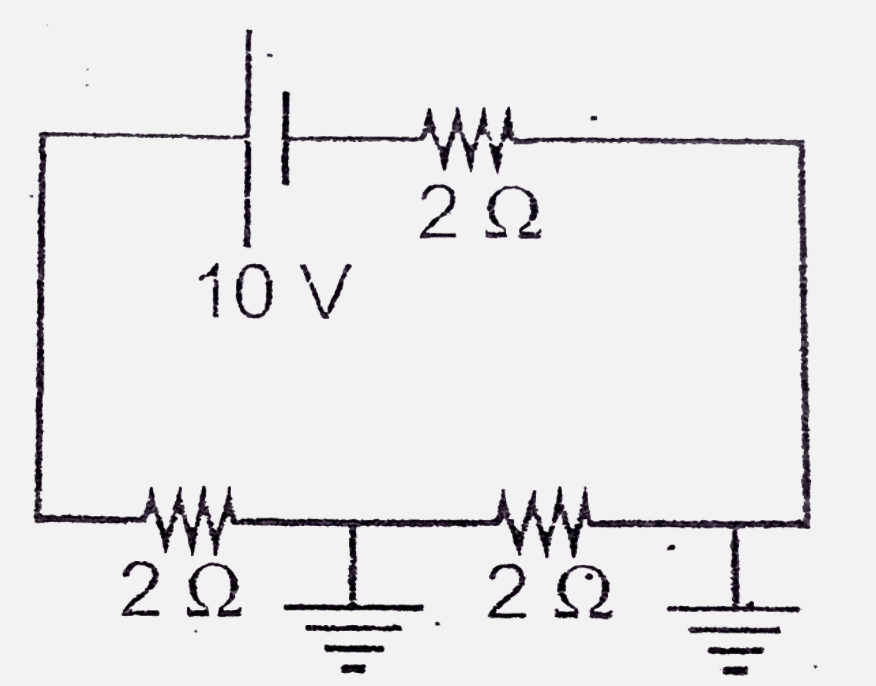The current flow through electrolyte is due to the movement of:
Holes
Ions
Electrons
None of these
The correct Answer is:B
Step-by-Step Solution:
1. Understanding Electrolytes:
- An electrolyte is a substance that dissociates into ions when dissolved in water. For example, sodium chloride (NaCl) dissociates into sodium ions (Na⁺) and chloride ions (Cl⁻).
2. Current Flow in Electrolytes:
- The flow of electric current through an electrolyte occurs due to the movement of charged particles. In the case of electrolytes, these charged particles are ions.
3. Role of Ions:
- When an electric current is applied to an electrolyte solution, the positively charged ions (cations) move towards the negatively charged electrode (cathode), while negatively charged ions (anions) move towards the positively charged electrode (anode).
4. Example of Ion Movement:
- Taking the example of NaCl in an aqueous solution:
- NaCl → Na⁺ + Cl⁻
- When connected to a battery, Na⁺ ions migrate towards the cathode, and Cl⁻ ions migrate towards the anode.
5. Conclusion:
- Therefore, the current flow through an electrolyte is due to the movement of ions, not electrons or holes.
Final Answer:
The current flow through an electrolyte is due to the movement of ions.
---
- An electrolyte is a substance that dissociates into ions when dissolved in water. For example, sodium chloride (NaCl) dissociates into sodium ions (Na⁺) and chloride ions (Cl⁻).
- The flow of electric current through an electrolyte occurs due to the movement of charged particles. In the case of electrolytes, these charged particles are ions.
- When an electric current is applied to an electrolyte solution, the positively charged ions (cations) move towards the negatively charged electrode (cathode), while negatively charged ions (anions) move towards the positively charged electrode (anode).
- Taking the example of NaCl in an aqueous solution:
- NaCl → Na⁺ + Cl⁻
- When connected to a battery, Na⁺ ions migrate towards the cathode, and Cl⁻ ions migrate towards the anode.
- Therefore, the current flow through an electrolyte is due to the movement of ions, not electrons or holes.
The current flow through an electrolyte is due to the movement of ions.
Topper's Solved these Questions
- BOOK - ICSECHAPTER - ELECTROLYSISEXERCISE - Reason Based Questions6videos
ELECTROLYSIS
- BOOK - ICSECHAPTER - ELECTROLYSISEXERCISE - Figure Based Questions8videos
ELECTROLYSIS
- BOOK - ICSECHAPTER - ELECTROLYSISEXERCISE - Fill in the Blanks22videos
ELECTROLYSIS
- BOOK - ICSECHAPTER - CHEMISTRY-2015EXERCISE - SECTION-II (40 Marks) Attempt any four questions from this Section.49videos
CHEMISTRY-2015
- BOOK - ICSECHAPTER - METALLURGYEXERCISE - UNIT TEST PAPER 6 - Metallurgy (Select the correct answer from the list A,B,C & given in each statement.)5videos
METALLURGY
Similar Questions
Knowledge Check
- Question 1 - Select One
Electrical conductance through metals is called metallic or electronic conuctance and is due to the movement of electrons. The electronic conductance depends on
A(a) the nature and structure of the metalB(b) the number of valence electrons per atomC(c) change in tempertureD(d) all of these.
The electrochemical equivalent of a substance is numerically equal to the mass of the substance deposited if a current 1 flows through the electrolyte for 0.25 seconds. The value of 1 is
View Solution
The current flowing through the zener diode in fig is-View SolutionThe current flowing through the cell in the circuit shown is
 View Solution
View SolutionIn an electrolytic solution the electric current is mainly due to the movement of free electrons.
View SolutionWhen current flows through a conductor, then the order of drift velocity of electrons will be
View SolutionWhen a current passes through a resistor, its temperature increases. Is it an adiabatic process?
View SolutionWhen a circuit is switched on, current flows through the circuit with the speed of light because
View Solution

